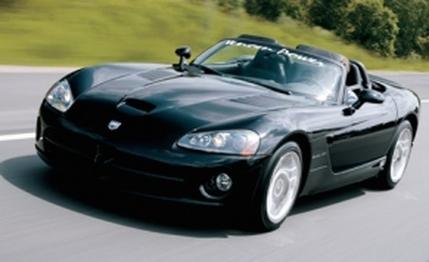
 Specialty File
Specialty File
It's been less than a year since we tested the new-for-2003 $85,000 Dodge Viper SRT-10 roadster, yet tuner John Hennessey has already brought us his reworked version of the same car for our usual thrashing. We're surprised how quickly Hennessey could create a $19,500 engine package that adds 100 horsepower to the stock Viper's already substantial 500-hp figure.
Viper owners, everybody knows, are poster children for excess. "I had guys at Dodge dealerships picking up their new Vipers last winter calling and asking if I could modify their cars," mused the 40-year-old Hennessey, "But I knew we had to take our time and make sure we got it right."
Hennessey's company has gone though a rough stretch the past few years. Some angry customers accused the Houston tuner of taking their money without delivering cars in a reasonable amount of time. (Editor-in-chief Csaba Csere delved into the matter, and his findings were reported in The Steering Column in September 2002.) Hennessey conceded he'd had problems.
Now he's regrouped, and after 10 years of modifying Vipers, he's downsized and restructured his company (now called Hennessey Performance Engineering), reducing employees from 15 to four. He recently arrived in Ann Arbor with the latest modified Viper in tow and with the same understanding of what was going to happen next: We would wring the bejeezus out of his car and report on what we find.
First, the $19,500 engine package. It's a combination of the usual hot-rod tricks: freer-flowing intake and exhaust paths. On the intake side, there's a new airbox. The Hennessey crew carefully took a grinder to the cylinder heads and throttle body to make wider openings. This grinding process is known in the business as porting. The technique usually does involve some sort of intake-passage widening, but it also requires reshaping the tunnels. Hennessey claims that with the porting and use of larger intake and exhaust valves, the heads on our test car permitted a 15-percent increase in airflow over the stock units. He's also confident that future modifications will yield a 23-percent overall increase in cylinder-head airflow.
On the exhaust side, the package has stainless-steel headers, higher-flowing catalytic converters, and a stainless-steel side-exhaust system made from three-inch tubing. Other bits include a higher-lift camshaft, hardened pushrods, heavy valve springs, and titanium valve retainers.
So now Hennessey's Viper puts out a reported 600 horsepower at 5700 rpm and 600 pound-feet of torque at 5000 rpm. Hence its name, the Venom 600. The stock 10-cylinder Viper SRT-10, by comparison, makes 500 horsepower at 5600 rpm and 525 pound-feet at 4200 rpm.
Trust us on this one: There's simply nothing like dropping the hammer in a 600-hp car that has the traction of 13.5-inch-wide rear tires. If you start from scratch, the Venom 600 hits 60 mph in a stunning 3.4 seconds, a half-second quicker than the stock car. It blows by 100 in 7.5 seconds, a one-second improvement. As the speed grows, so does the gap between the stock car and Hennessey's. In only 16.1 seconds the Venom does 150 mph, 6.3 seconds sooner than the stock version, and the quarter-mile flashed by in 11.4 seconds at 127 mph, a huge improvement over the stock figure of 12.1 at 121. It's rare that we test a car that can hit 170 mph on our straight, but the Venom 600 reached that velocity in only 26.2 seconds. Even a $120,000 Porsche 911 Turbo can't beat those numbers (0 to 60 mph in 3.9 seconds and 21.6 seconds to hit 150).
There's a slight loss of low-rpm performance with the engine package. Our top-gear tests are good ways to gauge low-rpm tractability and require accelerating from 30 to 50 mph and from 50 to 70 mph in sixth gear. Although the Venom 600 smoothly chugged away from 30 mph, it did need 14.9 seconds to hit 50, 4.6 seconds longer than the stock Viper. There was less of a gap in the 50-to-70-mph test. The stocker does it in 9.7 seconds, and the Venom took 10.9 seconds.
The only other caveat we'd like to offer concerns noise. We're talking offensive noise here. At idle the Venom 600 has a raspy, off-beat percussion that sounded to us like a four-wheeled version of the biggest noisemakers on the road today: unmufflered Harleys. If major-league noise is not your thing, Hennessey says a quieter exhaust system can be provided at no extra cost.
In the past, Hennessey may have had trouble with his delivery schedule, but one thing has always impressed us: Every one of his cars that we've independently tested has run ferociously strong and without failure. In that department, he's definitely been doing things right for a long time.
Hennessey Performance Engineering, 29334 McKinnon Road, Building B, Fulshear, Texas 77441; 281-346-1370; www.hennesseyperformance.com.